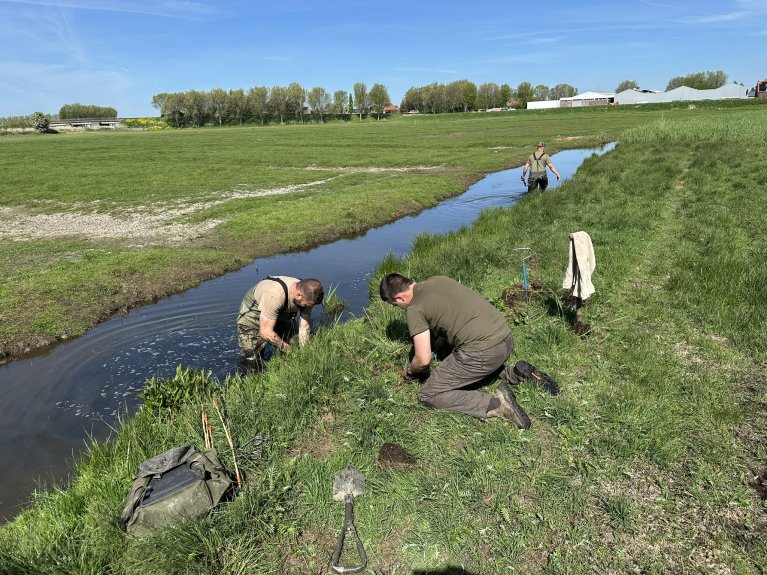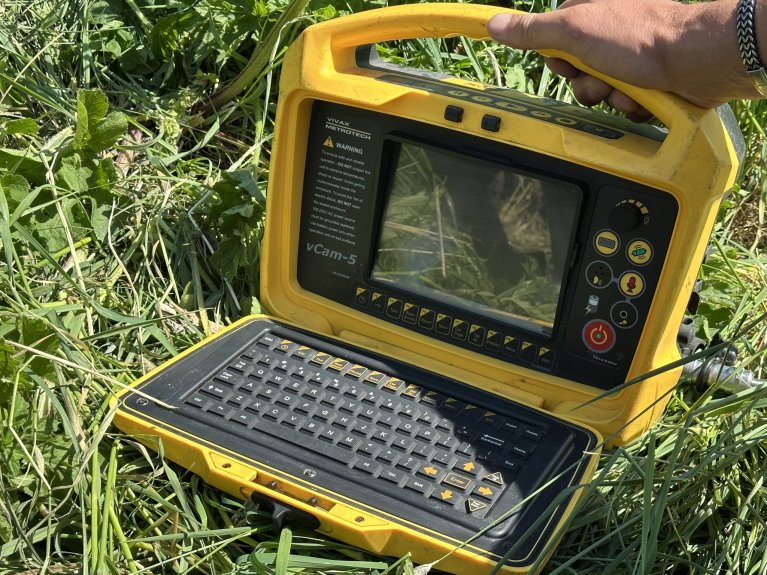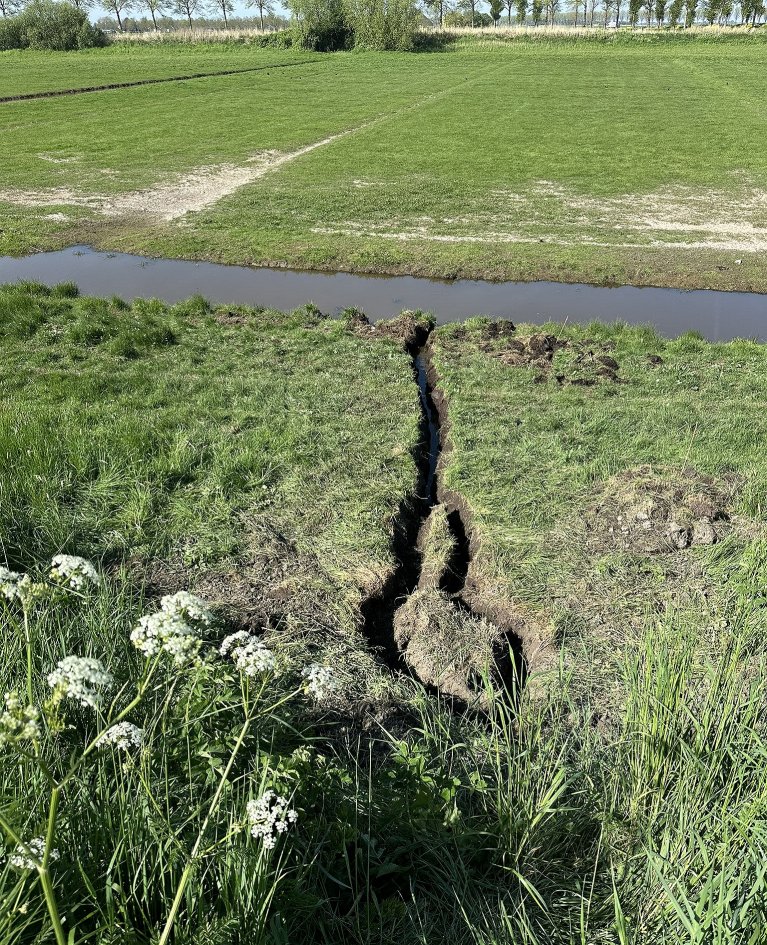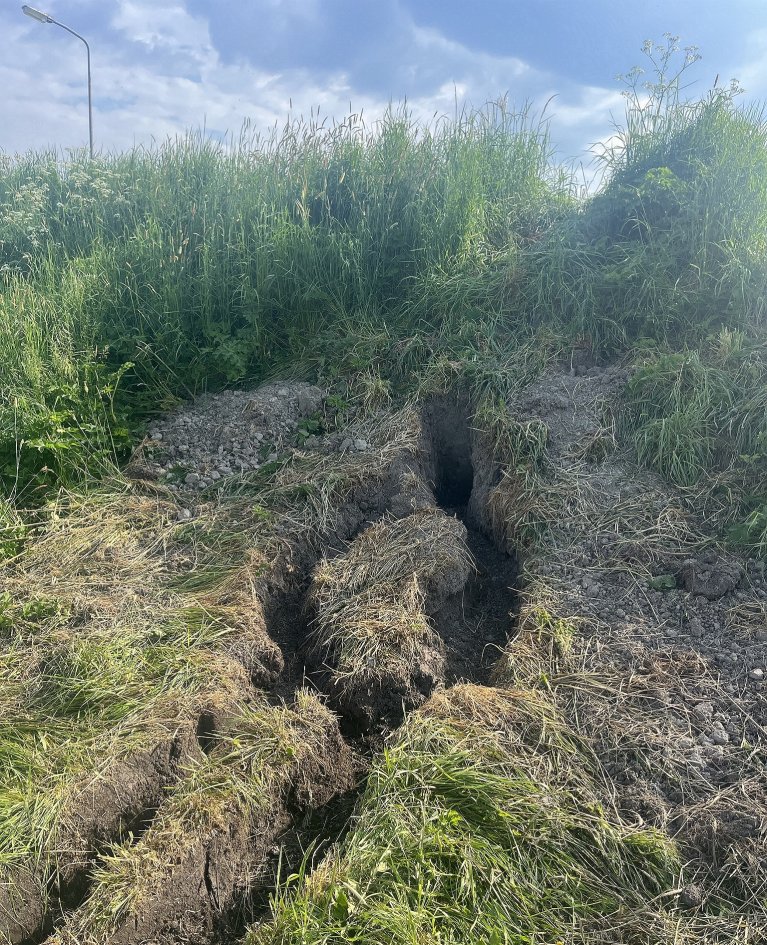Large tunnel system of muskrats in Westfriese Omringdijk
That muskrats are active in the Beschoot polder (near Oudendijk) was already known. A muskrat control officer who is specifically active there has already caught hundreds of these pests. Thanks to his tracking dogs, the fighter discovered this week an underground corridor on both sides of the dike, facing each other. It was feared that the corridor ran under the dike. This was thoroughly investigated by our people and the muskrat controllers.
Survey with sewer camera
The Slimdijk is part of the monumental Westfriese Omringdijk. Water could come through the dike and the stability of the dike could be in danger if the muskrats had actually dug a passage under it. They didn't succeed in doing that. To investigate that, we dug out the corridors from above until they disappeared into the dike. In the process, all kinds of remains of nests were discovered. In the dike itself we could not expose the corridor any further. Therefore, we tried to follow the corridors further with a sewer camera. This failed because the corridors were clogged with grass and other plant material that muskrats use as food and nesting material. We dug into the embankment and fortunately the corridors soon turned out to be dead ends, on the inside and outside of the dike. So there was no hole in the embankment.
Corridor
The muskrat controllers, who work for HHNK but are employed by Hoogheemraadschap De Stichtse Rijnlanden (HDSR), then found another whole system of corridors in the outer embankment of the dike. Over a distance of some 200 meters, as many as ten corridors were discovered, ranging from two to as much as twelve meters. All of these corridors were also dug open to gain insight into the behavior and lifestyle of the muskrat. It turned out to be more extensive than expected. These corridors also make the subsoil in this area extremely unstable: tractors are used that can sink into such an underground corridor just like that.
Threat to water safety
This exceptional find, so many corridors together, is rare. It just goes to show how difficult it is to control the muskrat and how necessary it is. In this case, thanks to its good nose, the tracking dog happened to discover a corridor on both sides of the dike. The rats live almost constantly underground and it is impossible to see where they are. Water Safety Portfolio Holder Arnold Langeveld: "The muskrat doesn't show itself but with its digging it threatens the stability of the dike, and thus water safety. It is unpredictable what will happen if we do not discover these kinds of burrows in time. This is why we must continue to make every effort to control this exotic species." Because the muskrat really does reproduce at lightning speed, and together the rodents pose a real danger to water safety. Which, by the way, has not been endangered in this case.
Aerial photos
Now that all the corridors have been dug open, we took aerial photos with a drone. The corridors will be sealed with the excavated material and extra soil, so at least these corridors and nests can no longer be used. The regular muskrat catcher will continue to search this polder with his dog, as it remains an attractive habitat for the muskrat.




